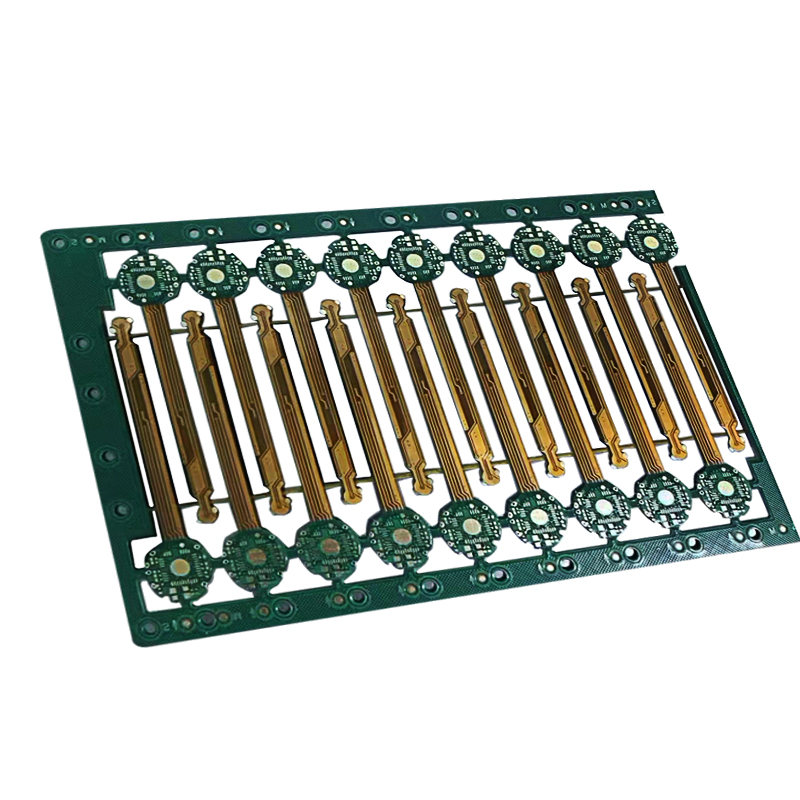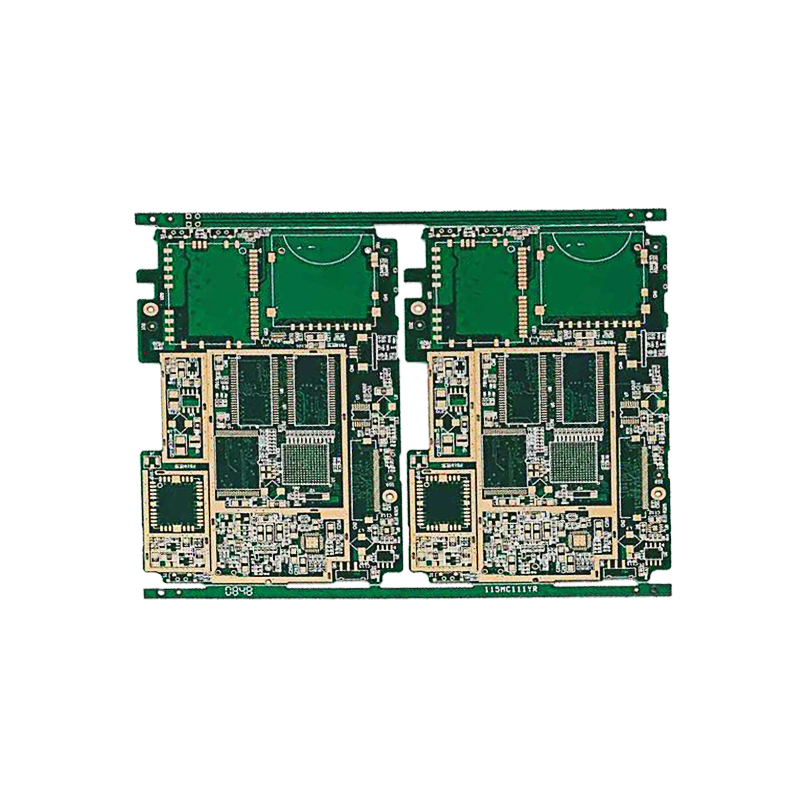
Do you know “why the PCB must be baked before SMT can pass through the reflow oven after the expiration date exceeds the shelf life”?
The main purpose of PCB baking is to dehumidify and dehumidify, and to remove the moisture contained in the PCB or absorbed from the outside world, because some materials used in the PCB itself are easy to form water molecules.
In addition, after the PCB is produced and placed for a period of time, it has the opportunity to absorb moisture in the environment, and water is one of the main killers that cause PCB popcorn or delamination.
Because when the PCB is placed in an environment with a temperature exceeding 100°C, such as a reflow oven, a wave soldering oven, a hot air leveling or hand soldering process, the water will turn into water vapor, and then rapidly expand its volume.
When the speed of heating the PCB is faster, the water vapor expands faster; when the temperature is higher, the volume of the water vapor is larger; when the water vapor cannot escape from the PCB immediately, there is a good chance to expand the PCB .
In particular, the Z direction of the PCB is the most fragile. Sometimes the vias between the layers of the PCB may be pulled off, and sometimes the layers of the PCB may be separated, and even the appearance of the PCB can be seen. Blistering, swelling, bursting, etc.;
Sometimes, even if the above phenomenon is not visible on the outside of the PCB, it is actually internally injured. Over time, the function of electrical products will become unstable, or problems such as CAF will occur, and eventually the product will fail.

Analysis of the real cause of PCB explosion and countermeasures to prevent it
The PCB baking process is actually quite troublesome. When baking, the original packaging must be removed before placing it in the oven, and then baking at a temperature exceeding 100 °C, but the temperature should not be too high, so as not to avoid the baking period. Excessive expansion of water vapor will actually burst the PCB.
Generally, the temperature for PCB baking in the industry is mostly set at 120±5℃ to ensure that the water vapor can really be eliminated from the PCB body, and then the SMT line can be used to make a board and then solder it in a reflow oven.
The baking time varies with the thickness and size of the PCB, and for thinner or larger PCBs, it is necessary to press the board with a heavy object after baking, in order to reduce or avoid PCB damage. The tragic occurrence of PCB bending deformation due to stress relief during post-bake cooling.
Because once the PCB is deformed and bent, there will be problems of offset or uneven thickness when printing solder paste on SMT, which will cause a large number of solder short circuits or empty soldering defects during subsequent reflow.
Condition setting for PCB baking
At present, the industry generally sets the conditions and time for PCB baking as follows:
1. The PCB is within 2 months of the manufacturing date and is well sealed. After unpacking, it should be placed in a temperature and humidity controlled environment (≦30℃/60%RH, according to IPC-1601) for more than 5 days. Bake at 120±5℃ for 1 hour.
2. If the PCB is stored for 2 to 6 months beyond the manufacturing date, it needs to be baked at 120±5℃ for 2 hours before going online.
3. If the PCB is stored for 6-12 months beyond the manufacturing date, it needs to be baked at 120±5℃ for 4 hours before going online.
4. It is basically not recommended to use PCBs that have been stored for more than 12 months beyond the manufacturing date, because the adhesive force of multi-layer boards will age with time, and quality problems such as unstable product functions may occur in the future, increasing market repairs. In addition, the production process also has risks such as explosion and poor tin consumption. If you have to use it, it is recommended to bake at 120±5℃ for 6 hours. Before mass production, try printing a few pieces of solder paste and put it into production to confirm that there is no solderability problem before continuing production.
Another reason is that it is not recommended to use a PCB that has been stored for a long time because its surface treatment will gradually fail over time. For ENIG, the industry’s shelf life is 12 months. It depends on the thickness. If the thickness is thinner, the nickel layer may appear in the gold layer due to diffusion and form oxidation, which affects the reliability.
5. All baked PCBs must be used within 5 days, and unprocessed PCBs must be re-baked at 120±5℃ for 1 hour before going online.

How to stack when PCB is baked
1. When baking large-size PCBs, they should be placed flat and stacked. It is recommended that the maximum number of a stack should not exceed 30 pieces. Within 10 minutes after baking, open the oven to take out the PCB and lay it flat to cool it. After baking, it is necessary to press Anti-bending fixture. Vertical baking is not recommended for large-size PCBs, which are easy to bend.
2. When baking small and medium-sized PCBs, they can be placed flat and stacked. It is recommended that the maximum number of a stack should not exceed 40 pieces. It can also be used vertically. The number is not limited. Open the oven and take out the PCB within 10 minutes after baking Let it cool, and after baking, the anti-bending jig needs to be pressed.
Precautions for PCB Baking
1. The baking temperature cannot exceed the Tg point of the PCB, and the general requirement cannot exceed 125 °C. In the early days, the Tg point of some lead-containing PCBs was relatively low, and now the Tg of lead-free PCBs is mostly above 150 °C.
2. The baked PCB should be used as soon as possible. If it is not used, it should be vacuum packed as soon as possible. If exposed to the shop for too long, it must be re-baked.
3. Remember to install ventilation drying equipment in the oven, otherwise the steam from the oven will remain in the oven to increase its relative humidity, which is not good for PCB dehumidification.
4. From the point of view of quality, the fresher the PCB solder used, the better the quality after passing through the furnace. Even if the expired PCB is used after baking, there will still be a certain quality risk.

Recommendations for PCB Baking
1. It is recommended to use a temperature of 105±5℃ to bake the PCB, because the boiling point of water is 100℃, as long as it exceeds its boiling point, the water will become water vapor. Because there are not too many water molecules in the PCB, it does not need too high temperature to increase the speed of its vaporization.
If the temperature is too high or the vaporization speed is too fast, it is easy to make the water vapor expand rapidly, which is actually bad for the quality, especially for multi-layer boards and PCBs with buried holes, 105 ℃ is just higher than the boiling point of water, and the temperature is not too high , which can dehumidify and reduce the risk of oxidation. Moreover, the ability to control the temperature of the oven now has been improved a lot than before.
2. Whether the PCB needs to be baked depends on whether its packaging is damp, that is, to observe whether the HIC (Humidity Indicator Card) in the vacuum packaging has shown damp. If the packaging is good, the HIC does not indicate damp. Can be served directly without baking.
3. When baking the PCB, it is recommended to use the “vertical type” and to bake at intervals, because this can achieve the maximum effect of hot air convection, and the moisture can be easily baked out of the PCB. However, for large-sized PCBs, it may be necessary to consider whether the vertical type will cause the problem of board bending.
4. After the PCB is baked, it is recommended to place it in a dry place and let it cool quickly. It is best to press the “anti-board bending jig” on the top of the board, because ordinary objects tend to absorb moisture during the process from high heat to cooling. , but rapid cooling may cause plate bending, which requires a balance.

Disadvantages of PCB Baking and Things to Consider
1. Baking will accelerate the oxidation of the coating on the PCB surface, and the higher the temperature, the longer the baking is, the more unfavorable it is.
2. It is not recommended to bake the board with OSP surface treatment at high temperature, because the OSP film will degrade or fail due to high temperature. If you have to bake, it is recommended to bake at a temperature of 105 ± 5 °C, no more than 2 hours, and it is recommended to use up within 24 hours after baking.
3. Baking may have an impact on IMC generation, especially for boards with HASL (tin spray), ImSn (chemical tin, immersion tin) surface treatment, because the IMC layer (copper-tin compound) is actually already in the PCB stage. Generation, that is, it has been generated before PCB soldering, but baking will increase the thickness of the generated IMC layer, causing reliability problems.
If you have any PCB demands, please feel free to contact us.
Email:[email protected]
Skype:[email protected]
Telephone number:+86 133 9241 2348
Whatsapp: +86 133 9241 2348